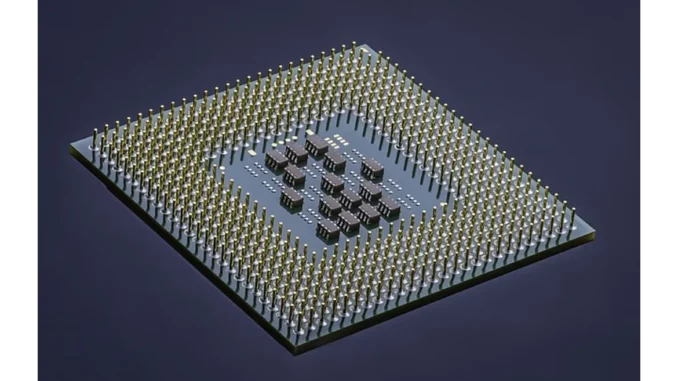
Summary
321-Layer NAND Flash Memory Sets New Industry Standard
The semiconductor industry has reached a groundbreaking milestone with the introduction of 321-layer NAND flash memory. This innovation signifies a significant leap in digital storage capabilities, addressing the rising demand for higher capacity and faster data processing. As the sector embraces this advancement, key industry figures highlight its potential to redefine standards and meet the growing global data generation needs.
Main Article
The semiconductor industry continues to push the boundaries of digital storage technology with the recent announcement of the mass production of the world’s first 321-layer NAND flash memory. This development marks a new era in the realm of non-volatile storage technology, which retains data even when power is lost. NAND flash memory is a critical component in a wide array of devices, from smartphones and tablets to solid-state drives (SSDs) and enterprise-level storage solutions. The technology is categorized by the number of bits stored per cell, with higher storage density often impacting speed and endurance.
Breaking Through Technological Barriers
Previously, the industry standard for stacking technology capped at 238 layers. The leap to 321 layers represents a major advancement in overcoming vertical scaling challenges. This breakthrough was made possible through the innovative “3 plugs” process technology. This method involves electrically linking three plugs via an optimised follow-up process, which not only enhances production efficiency but also ensures the stability and reliability of the memory cells.
“The 321-layer NAND flash memory is a testament to our relentless pursuit of innovation,” said Mark Liu, a leading figure in semiconductor technology. “By achieving this new benchmark, we are setting the stage for future developments that will continue to redefine the industry.”
Implications for Global Data Storage
The development of 321-layer NAND flash memory has far-reaching implications for the future of digital storage. With an increase in storage density, this technology allows for significantly more data to be stored within the same physical footprint. This advancement is critical as the volume of data generated globally continues to rise exponentially. The new technology also offers enhanced data transfer speeds and improved reading performance, addressing the demand for faster data processing across various sectors, from consumer electronics to data centres.
Furthermore, the enhanced power efficiency of this NAND flash memory aligns with the growing emphasis on sustainable technology. As devices become increasingly energy-intensive, the ability to deliver high performance while minimising energy consumption is a key consideration for both manufacturers and consumers.
AI and Beyond
A particularly exciting facet of the 321-layer NAND flash memory is its potential applications in the field of artificial intelligence (AI). AI technologies are inherently data-intensive, requiring massive storage capacity and rapid processing capabilities. The new NAND flash memory is well-equipped to meet these demands, making it an ideal choice for AI applications that necessitate high performance and low power consumption.
In AI data centres, where efficiency and speed are paramount, the 321-layer NAND flash memory can play a crucial role in optimising operations. Additionally, for on-device AI applications, such as those found in smartphones and IoT devices, the new technology can enhance user experiences by enabling faster data access and processing.
Detailed Analysis
The introduction of 321-layer NAND flash memory reflects broader trends within the semiconductor industry, where the relentless pursuit of innovation remains a driving force. The technology’s ability to increase storage density without compromising on speed or power efficiency is a testament to advancements in process technology and materials science. This development is not only a response to the exponential growth of data but also an alignment with the global push for sustainable technology solutions.
As noted by industry analyst Sarah Thompson, “The 321-layer NAND flash memory sets a new standard for storage technology. It not only addresses current challenges but also lays the groundwork for future innovations that will transform how we store and access data.”
Further Development
The mass production of 321-layer NAND flash memory is poised to have a significant impact on both consumer and enterprise markets. As manufacturers begin to incorporate this technology into their products, the industry will likely see a shift towards devices with enhanced storage capabilities and improved energy efficiency.
Looking ahead, further developments are expected as companies continue to refine and optimise this technology. The semiconductor industry remains in a state of rapid evolution, with the potential for even more layers and increased storage capacities on the horizon. Readers are encouraged to stay informed as more updates emerge, promising to reshape the landscape of digital storage and data management.

